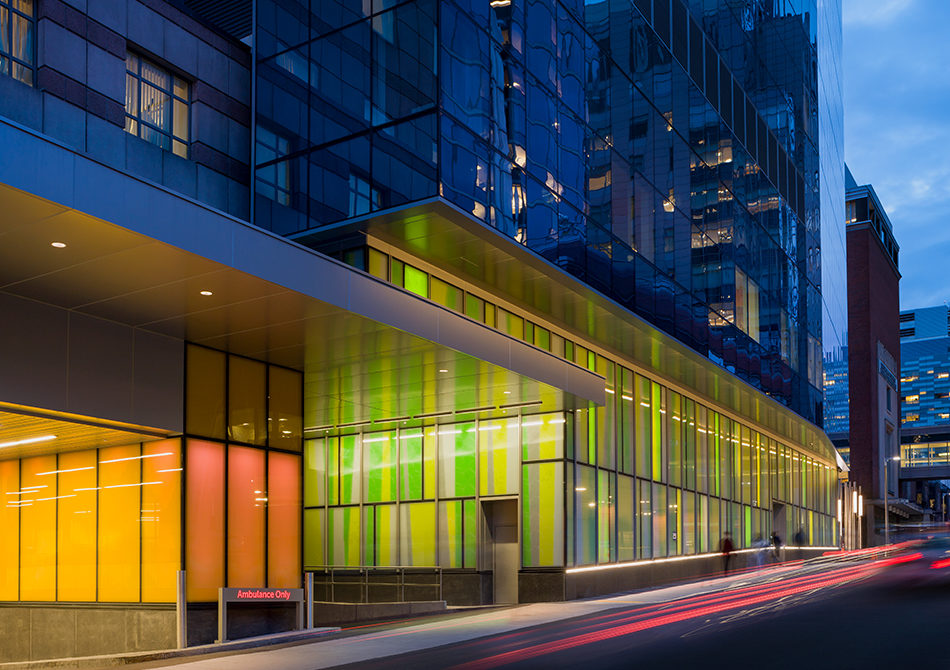I recently attended UNITE: Humanizing Healthcare event sponsored by Design Museum Boston and C-Space. The purpose of this panel discussion event was to “uncover the many ways that design can create empathy and help to improve healthcare for all, and the ways in which organizations operate to serve their patients.”
THE FACILITATOR, THE SHERPA AND THE DISRUPTOR
The diverse group of panelists sparked my interest in attending the Design Museum and C-Space discussion. Naomi Fried, Principal Consultant of Digital Health and Innovation Strategy; Stephen Pittman, Director of Program Management at Philips HealthTech; and George Takoudes, Healthcare Practice Leader at NBBJ are all innovative leaders in the healthcare field bringing a unique perspective to the conversation. Elisa O’Donnell, Managing Director of C Space, moderated the conversation and introduced the speakers as a Facilitator (George Takoudes), a Sherpa (Naomi Fried) and a Disruptor (Stephen Pittman).
Naomi Fried spoke to how she’s been humanizing healthcare with much of the work that she’s done for some of the major healthcare institutions around Boston. She believes that humanizing healthcare is focusing on patient-centered care which often empowers the patient by giving them more comfort and control. For instance, at the Boston Children’s Hospital (BCH) she’s helped to develop the MyPassport app, which aims to help patients and families have better access to their care. In the app, a patient can follow along as they progress through each stage of his or her treatment, and get immediate test results from the physician. Much like a Sherpa guiding a hiker through a complex environment, Naomi is developing ways to guide patients and families through the complex environment known as healthcare.
Stephen Pittman spoke to technology’s role in humanizing healthcare and how it can streamline the healthcare process for patients and families. He presented an integrated approach to the healthcare continuum, where we can utilize digital technologies at the early stages of healthy living to prevent illnesses, diagnose our ailments faster, have less invasive forms of treatment and allow us to access our care from the comfort of our homes. Stephen considers himself a “disruptor of healthcare,” because of the major changes that tend to come with adopting this integrated approach. As the technology continues to evolve, we will have to adapt our practices in order to optimize the benefits.
George Takoudes offered an Architect’s view of how to humanize healthcare. He echoed much of Naomi’s passion for patient-centered care/design, and how digital technologies are driving the design of many healthcare spaces and facilities. However, George believes that the architect facilitates humanizing healthcare through the architecture itself. In particular, hospitals can feel like a maze of sterile corridors that add to patients’ anxieties throughout their healthcare journey. As a facilitator, George relieves patients of some of their anxiety with clear, defined wayfinding and access to nature. He uses architecture as a vessel for balancing the empathy and efficiency needed for providing the patient with the highest quality of care.
LOOKING UP FROM THE CRYSTAL BALL
Although each panelist offered a unique perspective on humanizing healthcare, I felt that there was too much focus on the patient, and not enough focus on the other stakeholders that use healthcare facilities. Physicians, nurses and staff are a huge proponent of providing the patient with a satisfying healthcare experience. Patient-Centered Design does not mean only designing for the patient. Designers need to improve all aspects of a facility that could affect the patient’s quality of care, including components of the design utilized by staff. For example, staff lounges and workspaces are often compromised in order to provide better spaces for patients and families; however, architects and designers should consider creating better experiences and dedicated spaces for staff members that work in the facility full-time. If staff spaces do not provide a positive experience for their users, then a patient’s quality of care may suffer as a result.
 Boston Children’s Hospital, James Mandell Building
Boston Children’s Hospital, James Mandell Building
In addition to Patient-Centered Design, much of what was discussed had to do with how digital technologies can help to humanize the healthcare experience. In other words, adding more non-human elements to healthcare and removing some of the human interactions of a design can, in effect, humanize. It is an interesting paradox that calls into question what it means to humanize healthcare – which arguably was the whole point of the forum. The architectural profession needs to reflect on what makes us human, but we also need to progress and improve upon the issues we are currently facing with our healthcare. It’s good to gaze into the crystal ball to see what the future has in store, but we need to remember to look up from that crystal ball from time to time, in order to help design that future.
It’s my opinion that humanizing healthcare is developing the means to comfortably take control of our fragility. Humans are fragile by nature; and we constantly try to overcome that fragility by educating ourselves about our bodies. We utilize digital technologies such as applications and/or receive professional advice from other educated humans to help guide us towards the answer we seek. Architecture acts as a vessel for those digital technologies and healthcare professionals to help educate and cure us of our ailments, and that architecture has to ergonomically conform itself to our biology.


